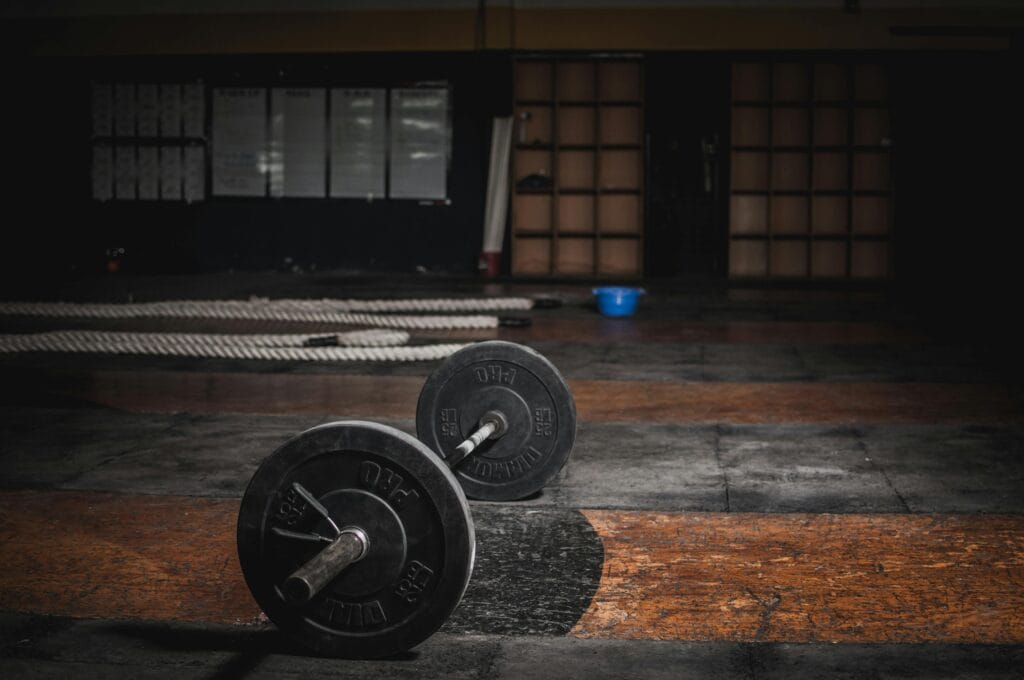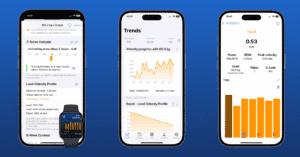Strength and power are essential components of athletic performance, and cluster sets have emerged as an effective strategy to enhance both. Unlike traditional set structures, cluster sets involve short, planned rest periods within a single set, allowing athletes to maintain higher levels of velocity and strength across more reps. This method also helps reduce fatigue, enabling athletes to lift heavier weights and maximize their performance potential.
In this article, we’ll dive into the science and structure of cluster sets, exploring how they work, when to incorporate them, and why they are ideal for maximizing strength and power. Additionally, we’ll discuss how tracking performance with Spleeft, an innovative training app, can help athletes get the most out of cluster set training.
DOWNLOAD SPLEEFT APP NOW FOR iOS, ANDROID AND APPLE WATCH!
Cluster Sets: Boost Strength and Power in Your Training with Spleeft App
What Are Cluster Sets?

Cluster sets are a strength training method where a set is divided into smaller groups, or “clusters,” with short rest intervals in between. Rather than completing all reps back-to-back, athletes take brief rests within the set, allowing muscles to recover partially before resuming. This structure enables higher quality reps, reducing the fatigue typically associated with traditional sets.
For example, in a traditional set, you might perform 8 reps without rest. In a cluster set, you could perform 2 reps, rest briefly, then repeat until you complete the 8 reps. This strategy is particularly useful in training for strength and power, as it enables athletes to maintain peak performance throughout each set.
How Cluster Sets Work
The key to cluster sets lies in the short rest intervals. These intervals allow for partial recovery of the muscle, preserving strength and power output across all reps. By allowing short breaks, cluster sets avoid the buildup of metabolic fatigue that often limits performance in traditional sets, especially at higher loads.
Example of a Cluster Set Structure
A typical cluster set for power and strength might look like this:
- Goal: 6 reps with a 3-5 second rest between each rep.
- Weight: 85% of 1RM.
- Execution: Perform 1-2 reps, rest for 5 seconds, repeat until all reps are completed.
Benefits of Cluster Sets for Strength and Power
Cluster sets offer several unique advantages for athletes aiming to increase their maximal strength and power output:
- Increased Volume at High Intensity: By breaking up the set, athletes can lift heavier weights for more total reps, leading to improved strength gains.
- Enhanced Power Output: Cluster sets help maintain velocity and power output across reps. This enhances your strength performance soon.
- Reduced Fatigue: Short rest intervals prevent the accumulation of fatigue, allowing athletes to complete more effective reps and achieve better quality in each movement.
By incorporating cluster sets into a training routine, athletes can tackle challenging loads with reduced risk of performance decline, maximizing the development of strength.
When to Use Cluster Sets in Your Training
Cluster sets are especially beneficial when:
- Training for Maximal Strength: Cluster sets allow athletes to handle near-maximal loads, providing a safe way to lift heavy without the burnout associated with traditional high-load sets.
- Building Power: Cluster sets are ideal for exercises focused on power, like Olympic lifts, where maintaining high velocity and force is critical.
- Reducing Fatigue in High-Volume Workouts: For athletes looking to increase training volume without excessive fatigue, cluster sets offer an effective way to do so.
Cluster sets are not only effective for building maximal strength and power, but they are also beneficial to avoid gaining muscle mass, as they reduce the metabolic stress on the muscles. This is particularly useful for endurance athletes, where weight gain can sometimes decrease performance. With cluster sets, endurance athletes can incorporate strength training without significantly affecting their body weight.
Common exercises that benefit from cluster sets include:
- Squats
- Deadlifts
- Bench Press
- Olympic lifts like the clean and jerk, and snatch
These exercises require high force production and can benefit from the fatigue management cluster sets provide.
How to Program Cluster Sets for Maximum Gains

Creating an effective cluster set program involves structuring reps, sets, and rest intervals to align with specific goals, whether it’s building maximal strength or increasing power output.
Step 1: Define Your Goal
If your goal is strength, aim for heavier loads (85-90% of 1RM) and shorter clusters (1-2 reps per mini-set). For power, use moderate loads (60-70% of 1RM) with slightly larger clusters (3-4 reps per mini-set).
Step 2: Set Reps and Rest Periods
Choose the total number of reps for each set and set a short rest interval. For example:
- Strength Focus: 4x (2 reps with 5 seconds rest), 3 minutes between full sets.
- Power Focus: 3x (3-4 reps with 10 seconds rest), 2 minutes between full sets.
Step 3: Track and Adjust
Using an app like Spleeft allows athletes to monitor performance in real-time, track power and strength metrics, and adjust based on progress.
Tracking Cluster Sets with Spleeft
Spleeft provides a unique advantage for athletes using cluster sets in their training by offering real-time feedback on rep quality and power output. This feature helps athletes understand their performance on each mini-set, allowing for immediate adjustments.
Key Features of Spleeft for Cluster Set Training
- Real-Time Rep Analysis: Track each rep’s velocity and power to ensure consistency throughout the cluster set.
- Fatigue Monitoring: Use velocity loss to know when to perform the cluster. For example, perform a long inter-rep rest when losing a 5% of velocity, instead of resting every two reps.
- Progress Tracking: With Spleeft’s data, athletes can monitor improvements over time, ensuring that cluster sets are yielding the desired results in strength and power.
Using Spleeft allows athletes to elevate their cluster set training, making each session efficient and aligned with specific performance goals.
Maximizing Your Training with Cluster Sets
Integrating cluster sets into a strength and power training routine is an effective way to manage fatigue, enhance power, and build maximal strength. With the ability to lift heavier weights with less performance decline, cluster sets offer a targeted approach to improve strength and explosiveness.
Tracking each session with Spleeft enables athletes to gain insights into rep performance, power output, and fatigue, ensuring each cluster set is optimized for peak performance. Whether you’re aiming for strength, power, or a combination, Spleeft provides the tools to make cluster sets an essential part of your training toolkit.
Download Spleeft today to maximize the benefits of cluster sets and bring data-driven insights to every workout.





